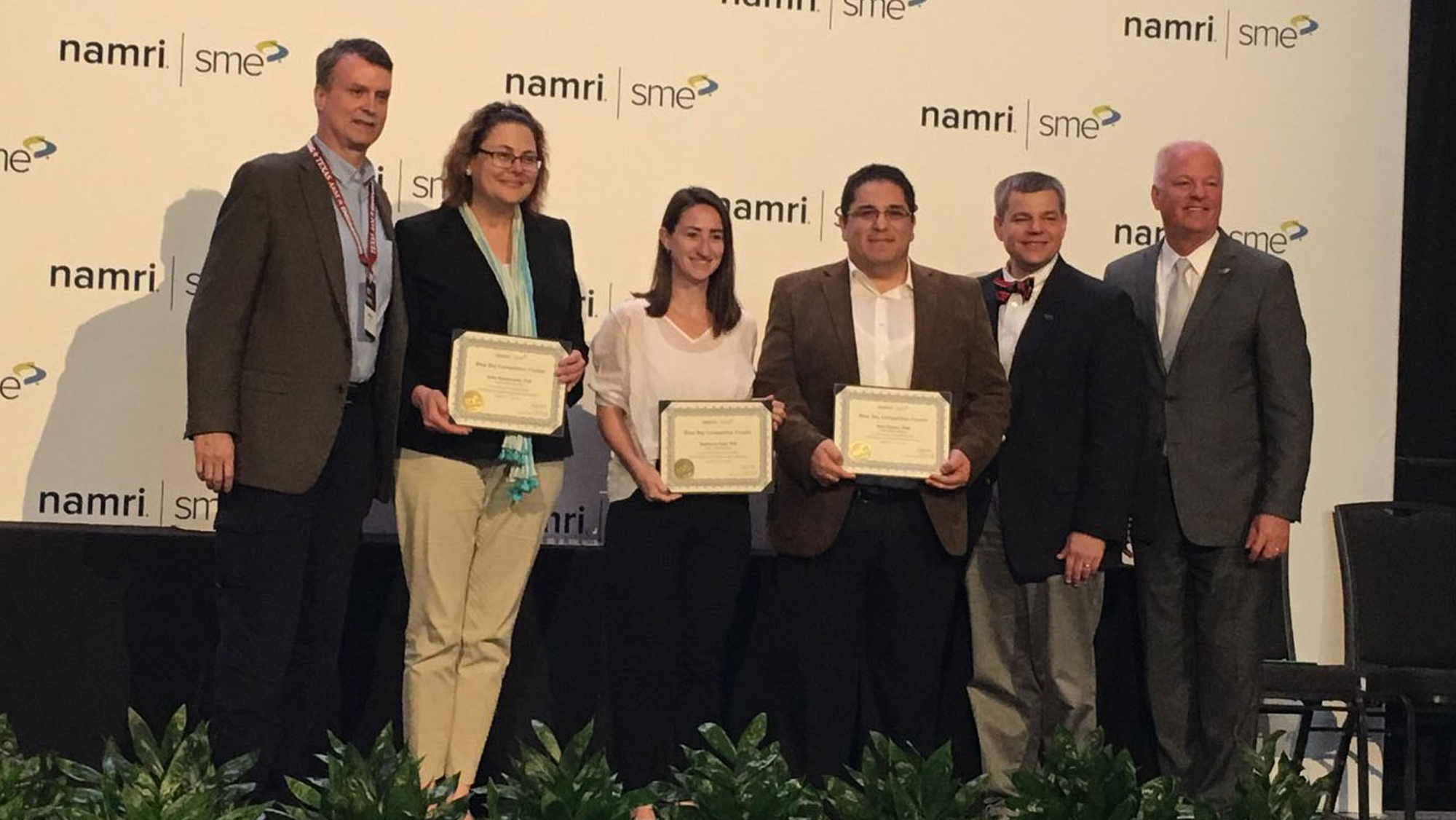
A team of researchers, including three from the Texas A&M University College of Engineering, set the sky as their limit to take home the first-place prize in the Blue Sky Competition at the North American Manufacturing Research Conference.
The goal of the Blue Sky Competition is to identify long-term challenges and new visionary ideas for manufacturing to influence the future of research and education in the U.S.
The Texas A&M team had to work together to develop a plan that had a wide-ranging, hugely-impactful concept, so they focused on civil infrastructure. Infrastructure, which includes everything from roads and buildings to power and water transportation systems, enables trade, supports businesses, maintains the quality of life and provides security against unpredictable events.
However, as the nation’s infrastructure ages, concerns regarding the affordable construction and restoration of civil infrastructure need to be addressed.
“Our team is highly multidisciplinary with expertise that spans advanced manufacturing, civil engineering, construction sciences and architecture,” said Dr. Alaa Elwany, assistant professor in the Department of Industrial and Systems Engineering. “We decided to enter the competition because we felt that our idea has significant potential to renew the U.S. aging civil infrastructure through re-imagining the way we build.”
The team researched advances in manufacturing technologies, specifically 3D printing, also called additive manufacturing. This method can potentially offer unique capabilities, including geometric freedom, material-saving through design optimization and functional complexity. Dr. Stephanie Paal, assistant professor in the Zachry Department of Civil Engineering, said all team members had a common understanding that innovation in civil infrastructure was lacking.
“Our team saw an urgent need to rethink the design and construction of civil infrastructure,” Paal said. “Our vision was that, by developing and testing new cost-effective manufacturing methods and materials for implementation in civil design and construction processes, we might be able to advance both fields in momentous ways.”
Dr. Zachary Grasley, professor in the civil engineering department and director of the Center for Infrastructure Renewal, said the concept of 3D printing infrastructure is both visionary and a challenge because the manufacturing community views construction as only partially related to their goals. If the U.S. successfully implemented 3D printing technology to build civil infrastructure, Grasley said it could lead to improved efficiency levels and productivity levels in construction.
“The way that we construct or manufacture civil infrastructure – things like bridges, buildings, pipelines, pavements and homes – has changed little over the past several decades in comparison to other manufacturing fields,” Grasley said. “The industry is ripe for innovation.”
“At some job sites, robots and printers are already fabricating building elements; however, additive robotic construction can accommodate growing populations and strengthen national resilience through faster and higher-quality rebuilding capabilities,” said Negar Kalantar Mehrjardi, assistant professor in the College of Architecture and team member.
The judging panel in the competition consisted of industry and government experts, including experts from federal program offices.
“Having our team win the competition is a reassuring indication that these panel experts saw the potential of our idea to have an impact on the future of manufacturing research and education,” Elwany said.
Dr. Zofia Rybkowski, team member and associate professor in the College of Architecture’s Department of Construction, said one of the benefits of the competition and others like it is they enable faculty to prepare students to lead in technological advancement.
“Additive manufacturing of buildings will fundamentally change the way our future graduates manage projects,” Rybkowski said. “Awareness and discussion with Texas A&M students and graduates provide the opportunity for them to guide progress, not only in financially lucrative ways, but in ways that are sustainable and responsible."
“I see this win as a great opportunity for Texas A&M to take a leadership position in the U.S. in the burgeoning field of advanced manufacturing for infrastructure construction,” Grasley said.